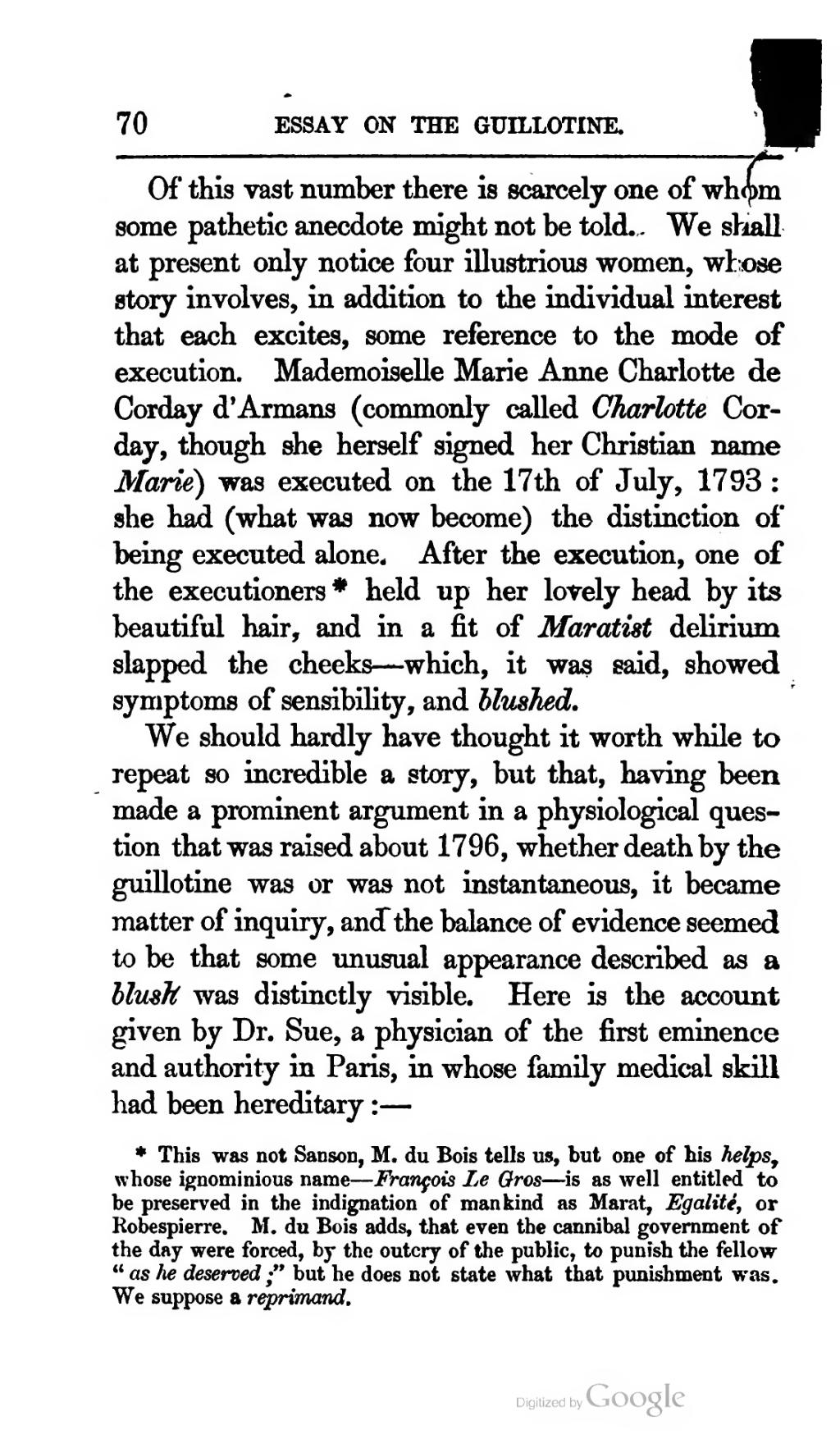Of this vast number there is scarcely one of whom some pathetic anecdote might not be told. We shall at present only notice four illustrious women, whose story involves, in addition to the individual interest that each excites, some reference to the mode of execution. Mademoiselle Marie Anne Charlotte de Corday d'Armans (commonly called Charlotte Corday, though she herself signed her Christian name Marie) was executed on the 17th of July, 1793: she had (what was now become) the distinction of being executed alone. After the execution, one of the executioners[1] held up her lovely head by its beautiful hair, and in a fit of Maratist delirium slapped the cheeks—which, it was said, showed symptoms of sensibility, and blushed.
We should hardly have thought it worth while to repeat so incredible a story, but that, having been made a prominent argument in a physiological question that was raised about 1796, whether death by the guillotine was or was not instantaneous, it became matter of inquiry, and the balance of evidence seemed to be that some unusual appearance described as a blush was distinctly visible. Here is the account given by Dr. Sue, a physician of the first eminence and authority in Paris, in whose family medical skill had been hereditary:—
- ↑ This was not Sanson, M. du Bois tells us, but one of his helps whose ignominious name—François Le Gros—is as well entitled to be preserved in the indignation of mankind as Marat, Egalité, or Robespierre. M. du Bois adds, that even the cannibal government of the day were forced, by the outcry of the public, to punish the fellow "as he deserved" but he does not state what that punishment was. We suppose a reprimand.

